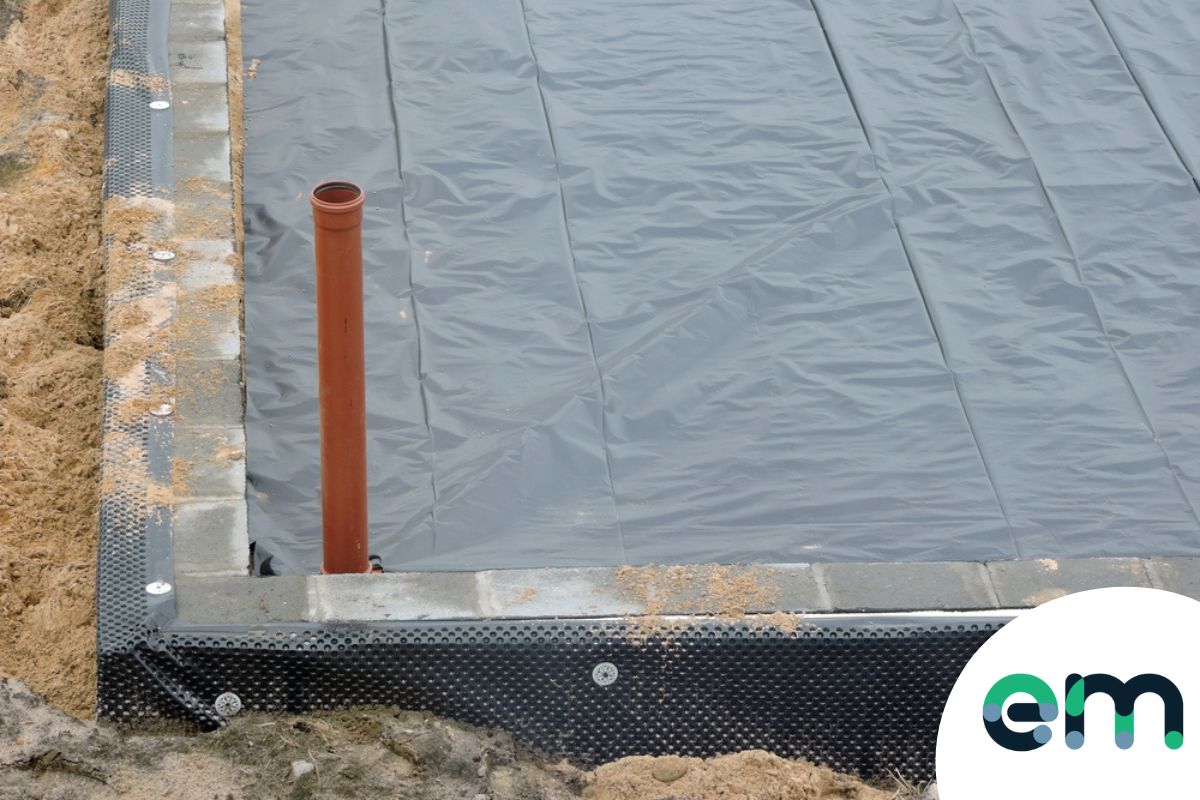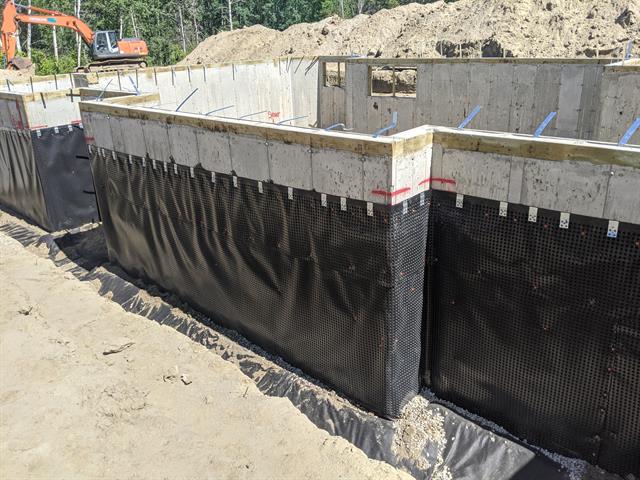Checking Out the Various Methods and Solutions for Effective Damp Proofing
Wetness in structures presents substantial obstacles to both structural stability and indoor air quality. Various strategies and remedies have arised to battle this prevalent concern. From conventional damp-proof membranes to cutting-edge chemical treatments, each technique offers one-of-a-kind advantages. Understanding these alternatives is vital for reliable dampness control. However, selecting the appropriate option depends on specific building problems and needs, triggering more exploration right into one of the most efficient damp proofing methods available.
Recognizing the Causes of Wetness
Although moisture can emerge from various resources, comprehending these causes is crucial for efficient remediation. Commonly, dampness originates from three main resources: climbing wet, permeating wet, and condensation. Increasing moist takes place when groundwater travels upwards via permeable products, such as brick or rock, often because of an absence of an effective barrier (mould removal newcastle). Penetrating wet is typically triggered by outside aspects, consisting of roofing leakages, defective gutters, or harmed walls, enabling water to infiltrate a residential property. Condensation, on the other hand, results from excess wetness in the air, commonly intensified by poor air flow and temperature level distinctions, leading to water beads developing on surface areas. Recognizing these underlying problems is vital, as each kind of moisture needs a customized strategy for removal. Proper evaluation helps in figuring out one of the most efficient services, ultimately safeguarding the architectural honesty of a structure and improving indoor air top quality
Traditional Damp-Proof Membrane Layers

Chemical Damp-Proofing Solutions
Chemical damp-proofing services use a cutting-edge technique to stop wetness breach in structures. These methods commonly entail the application of liquid chemicals that permeate masonry and develop a barrier against climbing moist. Typically made use of chemicals consist of silanes, siloxanes, and various other water-repellent agents that respond with surface area products to create a hydrophobic layer.The application procedure usually requires exploration openings into the walls, infusing the chemical option, and enabling it to heal. This technique is particularly advantageous for older frameworks where typical damp-proof membranes might be unwise. Moreover, chemical damp-proofing can be much less turbulent and much more cost-efficient than substantial renovation projects.While reliable, these options depend upon proper application and ecological problems for peak efficiency. Routine upkeep and tracking are necessary to ensure the durability of the damp-proofing therapy. In general, chemical damp-proofing stands for a versatile choice for securing buildings versus moisture-related damages
Cavity Wall Construction Techniques
Tooth cavity wall surface building and construction techniques provide countless benefits, specifically in wetness control and power effectiveness. By integrating an air gap in between two layers of stonework, these walls efficiently minimize water ingress while improving insulation. This mix not just safeguards structures from moisture but likewise contributes to decreased power consumption.
Advantages of Tooth Cavity Walls
When thinking about effective moist proofing approaches, the benefits of tooth cavity wall surfaces stand out plainly. Dental caries walls consist of two separate layers, creating an air gap that efficiently reduces wetness infiltration. This design decreases the threat of dampness, as the external wall surface acts as an obstacle versus rain and water ingress. Additionally, cavity wall surfaces boost thermal insulation, which adds to energy efficiency by minimizing heat loss. They additionally offer audio insulation, aiding to develop a quieter indoor atmosphere. In addition, the air space enables for ventilation, which helps in wetness control and lowers the chance of mold and mildew development. These advantages not just improve the general convenience of a structure but likewise contribute to its durability and architectural honesty.
Moisture Control Techniques
Efficient moisture control methods are vital in tooth cavity wall surface construction to assure lasting defense versus moisture. One key method involves the consolidation of weep openings, which promote water drainage from the dental caries, protecting against accumulation. Furthermore, making use of breathable membrane layers can assist manage moisture degrees while enabling caught vapor to run away. Correct positioning of insulation is also vital, as it needs to not obstruct drain courses. Making certain that the external fallen leaves of the tooth cavity wall are constructed with water-resistant products boosts overall longevity. Routine maintenance checks are vital to recognize any obstructions or damages early, guarding the framework's honesty. Ultimately, a combination of these techniques forms a robust protection versus dampness breach in dental caries wall surfaces.
Insulation and Energy Effectiveness
Insulation plays an important duty in boosting energy efficiency within tooth cavity wall surface building. By including shielding materials, these wall surfaces produce a thermal obstacle that minimizes warmth loss and reduces power consumption. Reliable insulation not just helps keep a stable interior temperature yet also minimizes the risk of moisture, as it protects against condensation within the wall tooth cavity. Numerous techniques, such as the use of stiff foam boards or mineral mould removal newcastle wool, can be utilized to attain optimal insulation efficiency. In addition, correct installation is necessary to assure that gaps and voids are minimized, which can or else endanger energy performance. Eventually, a well-insulated dental caries wall surface contributes greatly to overall sustainability and lowers heating and air conditioning costs for homeowners.
Exterior Damp Proofing Methods
Outside moist proofing approaches are essential for shielding frameworks from moisture seepage. 2 efficient strategies consist of the application of water resistant membrane layers and the installation of French drains pipes. These remedies help reduce water buildup and protect the honesty of buildings.
Waterproof Membrane Layer Application
While numerous approaches exist for avoiding dampness access, the application of water-proof membrane layers stays an extremely efficient exterior damp proofing technique. These membrane layers are typically made from materials such as polyethylene, rubber, or modified bitumen, supplying a durable barrier versus water infiltration. The installment process entails applying the membrane layer to the exterior surfaces of walls or structures, making certain complete insurance coverage to protect against leakages. Proper adhesion and securing at joints are essential to taking full advantage of performance. Water resistant membranes can be used in different forms, including liquid coatings and sheet membrane layers, enabling adaptability based on the specific demands of the framework. This approach not just protects structures from dampness but additionally boosts their durability and architectural stability.
French Drainpipe Setup
One efficient method for handling groundwater and protecting against wetness accumulation around a structure's structure is the installment of a French drain. This water drainage system includes a trench filled up with crushed rock and a perforated pipeline that redirects surface area water away from the foundation. Correct installation calls for cautious planning, guaranteeing that the drainpipe slopes far from the framework to assist in perfect water flow. In addition, the area of the drainpipe is crucial; it needs to be positioned in locations susceptible to pooling or excess moisture. Normal upkeep, consisting of clearing debris from the gravel and guaranteeing the pipe continues to be unhampered, is important for long-lasting effectiveness. Ultimately, a well-installed French drainpipe can significantly reduce the threat of water-related issues in basements and foundations.
Inside Waterproofing Strategies
Inside waterproofing strategies are vital for shielding a building's interior from moisture seepage and possible water damage. These techniques typically entail the application of specialized products and strategies created to create a wetness barrier within the framework. One common method is the use of water resistant finishes or sealants on wall surfaces and floorings, which prevent dampness from permeating surfaces.Additionally, setting up interior drainage systems, such as sump pumps, can properly handle water buildup in basements and creep rooms. One more approach includes the usage of vapor obstacles, which are installed to inhibit wetness movement from the ground right into living spaces.Moreover, dealing with any type of cracks or voids in wall surfaces or structures with appropriate sealants guarantees a comprehensive protection versus water breach. By carrying out these indoor waterproofing methods, residential or commercial property proprietors can substantially minimize the danger of mold development, architectural damages, and other moisture-related issues. Appropriate implementation of these methods is vital for lasting defense and structure integrity.
Routine Maintenance and Assessment Practices
Routine maintenance and examination practices are important for assuring the long-lasting performance of moist proofing remedies in any type of building. Routine checks make it possible for building owners to recognize very early signs of moisture breach, such as peeling paint, mold growth, and musty odors. These indicators can indicate underlying issues that call for prompt attention.Inspections should be conducted a minimum of yearly, concentrating on prone areas like basements, crawl rooms, and outside wall surfaces. Throughout these analyses, homeowner must take a look at sealers, water drainage systems, and air flow to verify they work correctly.Additionally, maintaining downspouts and gutters is crucial, as clogged up systems can lead to water accumulation near the foundation. Applying a normal upkeep schedule, along with timely fixings, can substantially expand the lifespan of damp proofing procedures and secure the architectural honesty of the structure. Aggressive actions ultimately add to the overall wellness and security of the living environment.
Regularly Asked Concerns
The Length Of Time Does Damp Proofing Typically Last?
The period of damp proofing efficiency varies, usually lasting in between 20 to 50 years. Aspects such as application high quality, ecological conditions, and upkeep techniques significantly affect the long life of the wet proofing therapy.

Can I Damp Proof My Home Myself?
The private considered the feasibility of DIY damp proofing. With correct research study and the right materials, it is feasible. They likewise acknowledged the importance of specialist advice to ensure long-lasting performance and stop future concerns.
What Are the Signs of Inadequate Damp Proofing?
Signs of inefficient wet proofing consist of relentless mildewy odors, visible mold and mildew growth, peeling paint, damp patches on wall surfaces, and timber decay - damp proofing newcastle. Homeowners should deal with these problems immediately to avoid more damages and health and wellness issues
Does Damp Proofing Affect Indoor Air High Quality?

Just How Much Does Expert Damp Proofing Cost?
Expert wet proofing prices vary considerably, usually ranging from $1,000 to $5,000 depending upon the building's size, the degree of the moist concern, and selected approaches. Each circumstance requires a customized assessment for precise pricing. Typically, moisture stems from three primary sources: increasing wet, passing through wet, and condensation. When thinking about effective moist proofing techniques, the advantages of cavity walls stand out plainly. External damp proofing approaches are essential for shielding structures from dampness infiltration. While different approaches exist for preventing wetness access, the application of water resistant membranes stays a highly reliable external moist proofing strategy. Indicators of ineffective wet proofing include consistent moldy odors, noticeable mold development, peeling paint, moist spots on walls, and timber decay.